Processor
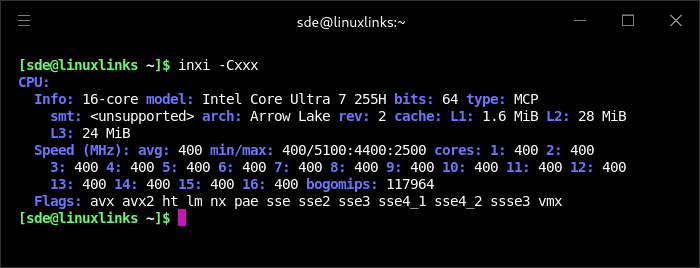
The first 6 cores are the performance-cores, the next 8 are the efficient-cores, and the final two are the low power efficient-cores. As inxi indicates, the maximum turbo frequency of the performance-cores is 5.1 GHz, the efficient-cores max turbo frequency is 4.4 GHz, and the low power efficient-cores max turbo frequency is 2.5 GHz.
There is no Hyper-Threading on the 6 P-Cores.
I took this image with the machine under little load with the balanced governor. All 16 cores are running at their lowest speed (400 MHz).
Graphics
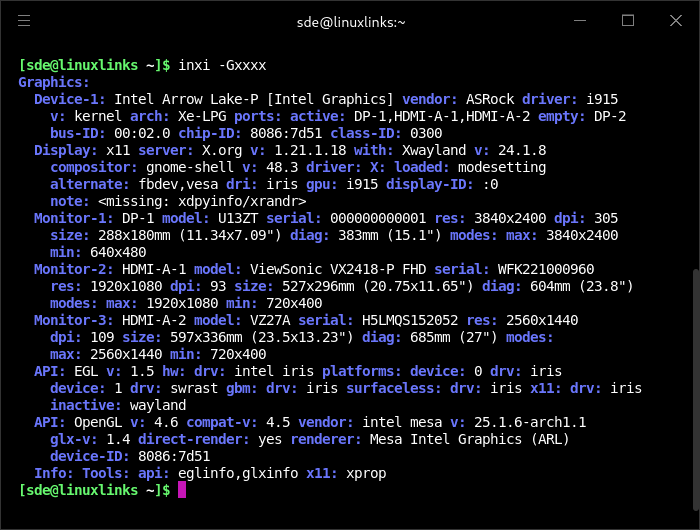
In the image above, I’ve got 3 displays attached, two with HDMI, the other over Type-C, but the machine supports a maximum of 4 displays.
Disk
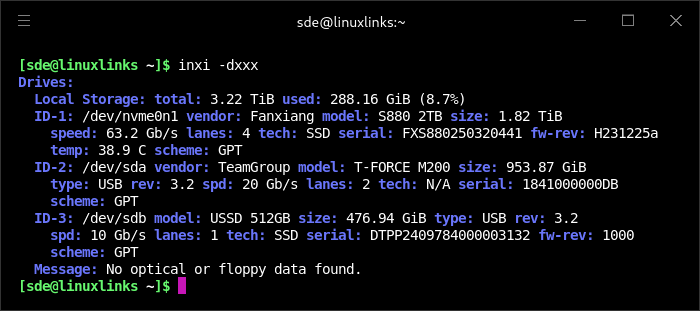
ASRock provided a barebone machine without a disk. The machine offers triple internal storage support including 1 x M.2 (KEY M, 2242/2280) with PCIe Gen 4×4 for SSD, 1 x M.2 (KEY M, 2242) with PCIe Gen 4×4, and 1 x SATA3.0 (6.0 Gb/s).
I added a 2TB fanxiang M.2 2280 Gen 4×4 NVMe. There’s also the option of adding fast external storage. When taking the above image, I also had an external 1TB NVMe attached to the USB 3.2 Gen 2.2 port (2,000 MB/s read and write speeds), and a 512GB SSD drive attached to one of the Type-A ports (1,000 MB/s read and write speeds).
Memory
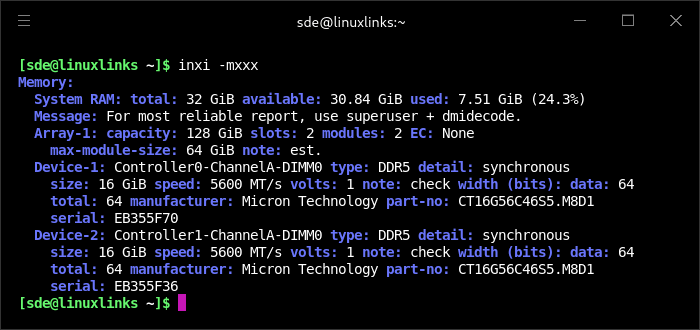
The machine can take a maximum 96GB of RAM (48GB per SO-DIMM). I’m not sure why inxi is reporting higher figures. It’s dual channel DDR 5 technology with a maximum 6400 MHz RAM frequency.
I’ve populated the machine with a couple of Crucial DDR5 SO-DIMMs running at 5600 MHz. It’s bargain basement RAM but sufficient for evaluating the machine.
Audio
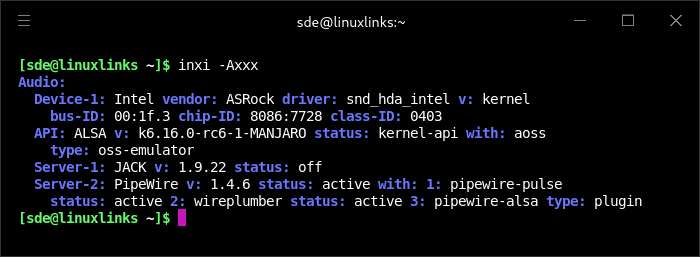
Bluetooth

The mini PC provides Bluetooth 5.3 which works out of the box. I’ve connected some Edifier speakers which sound great.
Network
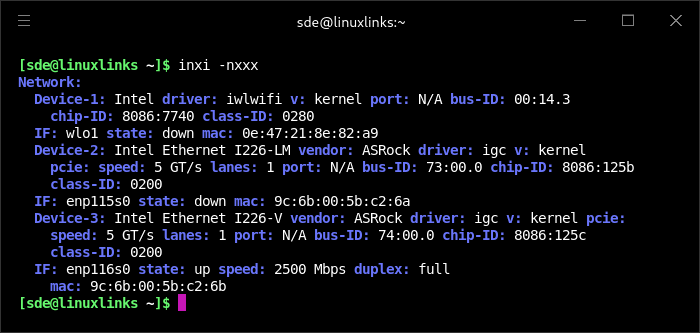
The NUC offers both wireless and wired connectivity: Intel Wi-Fi 6E 802.11ax and a pair of 2.5Gb Ethernet. Everything works out of the box with Manjaro, Ubuntu and KUbuntu. No messing about with drivers. Intel remain one of the most active code contributors to the Linux kernel.
Temperature
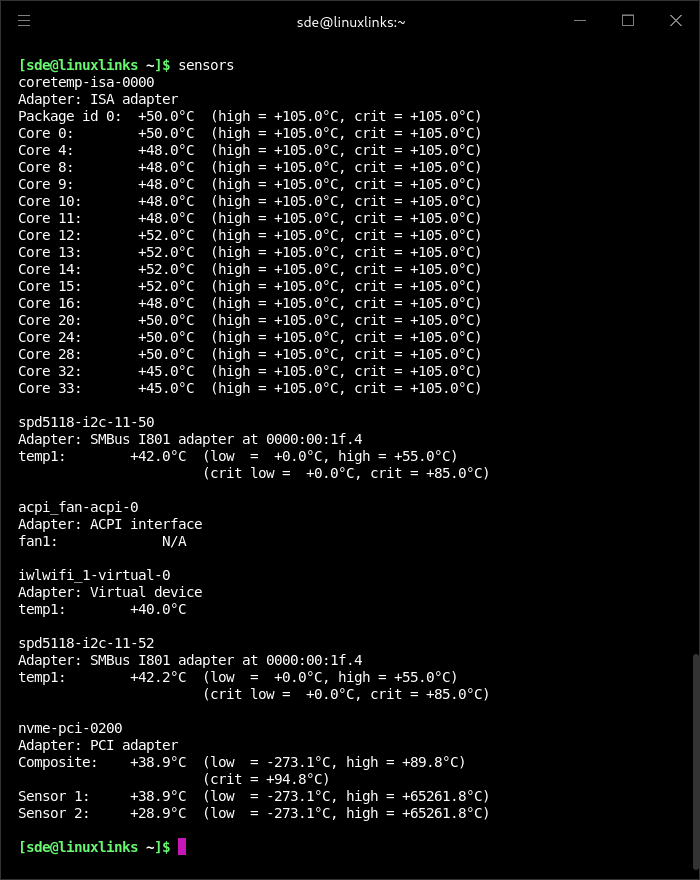
The machine was under fairly light load when taking this temperature reading on a warm summer day (room temperature 24.1°C).
Note this temperature reading is with the machine running with its default fan settings in the BIOS.
The machine is very quiet when idling but I lowered the fan speed in the BIOS so that the machine is inaudible from 1 metre under light load.
In the next article in this series, I’ll run a variety of benchmarks.
Pages in this article:
Page 1 – Introduction and Design
Page 2 – Initial Impressions running Linux
Page 3 – Interrogation of the System
Complete list of articles in this series:
| ASRock Industrial NUC BOX-255H | |
|---|---|
| Introduction | Introduction to the series and interrogation of the NUC BOX-255H |
| Benchmarks | Benchmarking the NUC BOX-255H |
| Power | Testing and comparing the power consumption |
| Stable Diffusion | Deep Learning with Stable Diffusion |
| Audacity AI Plugins | Let's explore OpenVINO AI Plugins for Audacity |
| 3 Types of Cores | P-cores, E-cores and low power E-cores performance |
| GIMP AI Plugins | Stable Diffusion, Super Resolution, Semantic Segmentation |
| Ubuntu | Upgrading from Ubuntu 25.04 to Ubuntu 25.10 |
| Image Upscaling Tools | A survey of upscaling tools |
| Noise | Comparing the machine's noise with other mini PCs |
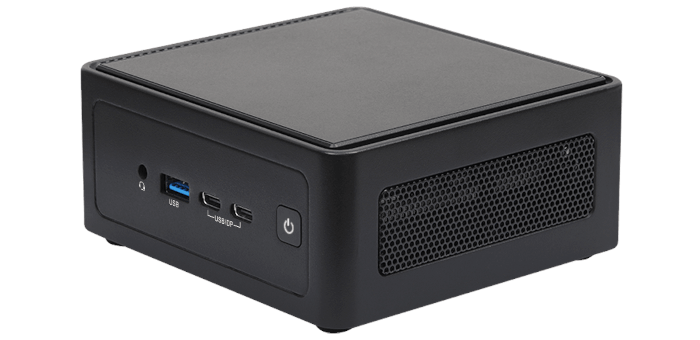
Is the machine quiet enough for a bedroom at night?
Yes. It does run extremely quietly under no load. And the BIOS options give you real flexibility when configuring fan speed. You can set the first trip point so the fan doesn’t come on at all until a certain temperature is reached.
The machine is perfect for someone who wants to leave the machine on and not be disturbed at all during the night.
Many mini PCs don’t offer this flexibility. Their fan can always be on whatever the CPU temperature (and room temperature). And remember that in mini PCs, the fan is small in size. Generally speaking a big fan can run quieter than a small fan. Some budget mini PC’s have really annoying fan noise even when the machine is idle. That can happen even if the machine has a CPU with a very low TDP (e.g. N100 with its 6W TDP).